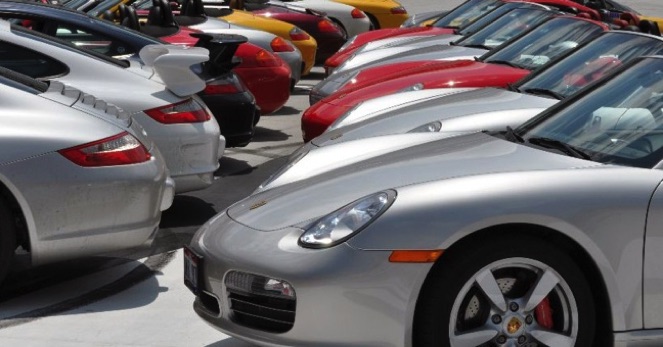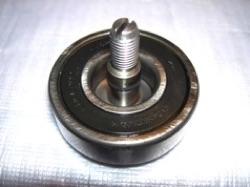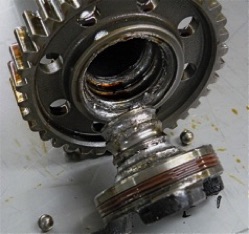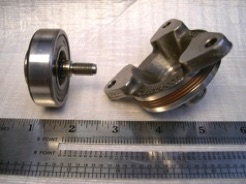
Published in the April 2013 issue of “Die Porsche Kassette”
If you own a Boxster, a Cayman, or a water-cooled Carrera up through model year 2008 (inclusive), this should interest you.

I’ll try to dispel the myths from the facts and tell it to you straight, as we believe it to be true. First read through the bad and the ugly; you need to understand it, but I promise there’s a good as well, at the end.
THE BAD
• All M96 and M97 engines have an intermediate shaft, supported by bearings on both ends. A small (but important) percentage of these cars are known to have issues with the intermediate shaft (IMS) bearing nearest the flywheel. This end of the IMS, in contrast to the other end does not receive pressure fed oil for lubrication, hence the failures.
• The list of the M96/M97 shod cars includes all Boxsters (’97 - ’08), all Caymans (’06 -’08) and all Carreras (’99 -’08) - except the Turbo, the GT2 and the GT3 which share the old air-cooled engine design based on the 964 engine case.
• These IMS bearings have been known to fail with as little as 5,000 miles while at the same time there are some vehicles with 250,000 plus miles still on the original bearing.
• Porsche made the first revision of the IMS bearing in model year 2000 going from a double-row bearing in the earlier models to a single-row bearing.
• Porsche made the second revision of the IMS bearing in model year 2006 going to a much larger single-row bearing.
• The single-row shod cars (’01 – ‘05) have the highest failure rates.
• All of the three IMS bearings Porsche installed in the M96 and M97 engines have been known to fail.
• The double-row and single-row (up to ’06) can be extracted and replaced without having to remove the engine from the car, just the transmission.
• The larger single-row (’06-’08) cannot be extracted from the engine without removing the engine and opening the engine case.
• Porsche has never acknowledged that there was an issue with the IMS bearing and its design, but for model year 2009 the factory introduced a brand new engine, the MA1, which does not have an intermediate shaft (IMS) nor the IMS bearing.
• Cars that are driven regularly and driven hard have less IMS bearing failures that those that are babied and sit in a garage or are not tracked or driven spiritedly.
• The intermediate shaft (IMS) bearing in all of these cars needs to be treated as a wear item, replaced roughly every 50,000 miles.
• Every time you replace the clutch (or drop the transmission) it is recommended that you check/replace the IMS bearing.




THE UGLY:
What’s the percentage of failure?
On the model years 2000 through 2005 (which use the smaller, single-row IMS bearing and have the worst track record) the failure rate is accepted at nearly 10% of all cars by the time they reach 100,000 miles.
Why do these bearings fail?
The simple answer is lack of proper lubrication.
Porsche installed these IMS bearings completely sealed with lifetime grease.
With time, heat and a little splash of rancid oil found inside the IMS, the grease dissolves and the bearing dries out. Very soon thereafter it starts to overheat and starts to wear the race and or the balls, eventually leading to catastrophic failure.
The opposite side of the IMS is also supported by a bearing which is constantly lubricated with a stream of oil from one of the oil pumps. This bearing has never been known to fail.
What can be done?
There are several manufacturers that offer replacement aftermarket IMS bearings (including ceramic ball bearings).
I want to let it be known that replacing the IMS bearing does not cure the problem, it just treats the symptom, like a (temporary) pain killer.
These aftermarket bearings (including the stronger and more efficient ceramic-ball types) are also recommended to be replaced every 50,000 miles and also have been known to fail as well.
THE GOOD:
To get to the good part, and it’s REALLY good, please check out the next issue where we will explain about the FINAL (and affordable) IMS bearing solution.
To learn more about the IMS and more, please visit my website at: wwwPedrosGarage.com.
Happy Porscheing,
Ⓒ2013 Technolab / PedrosGarage.com


